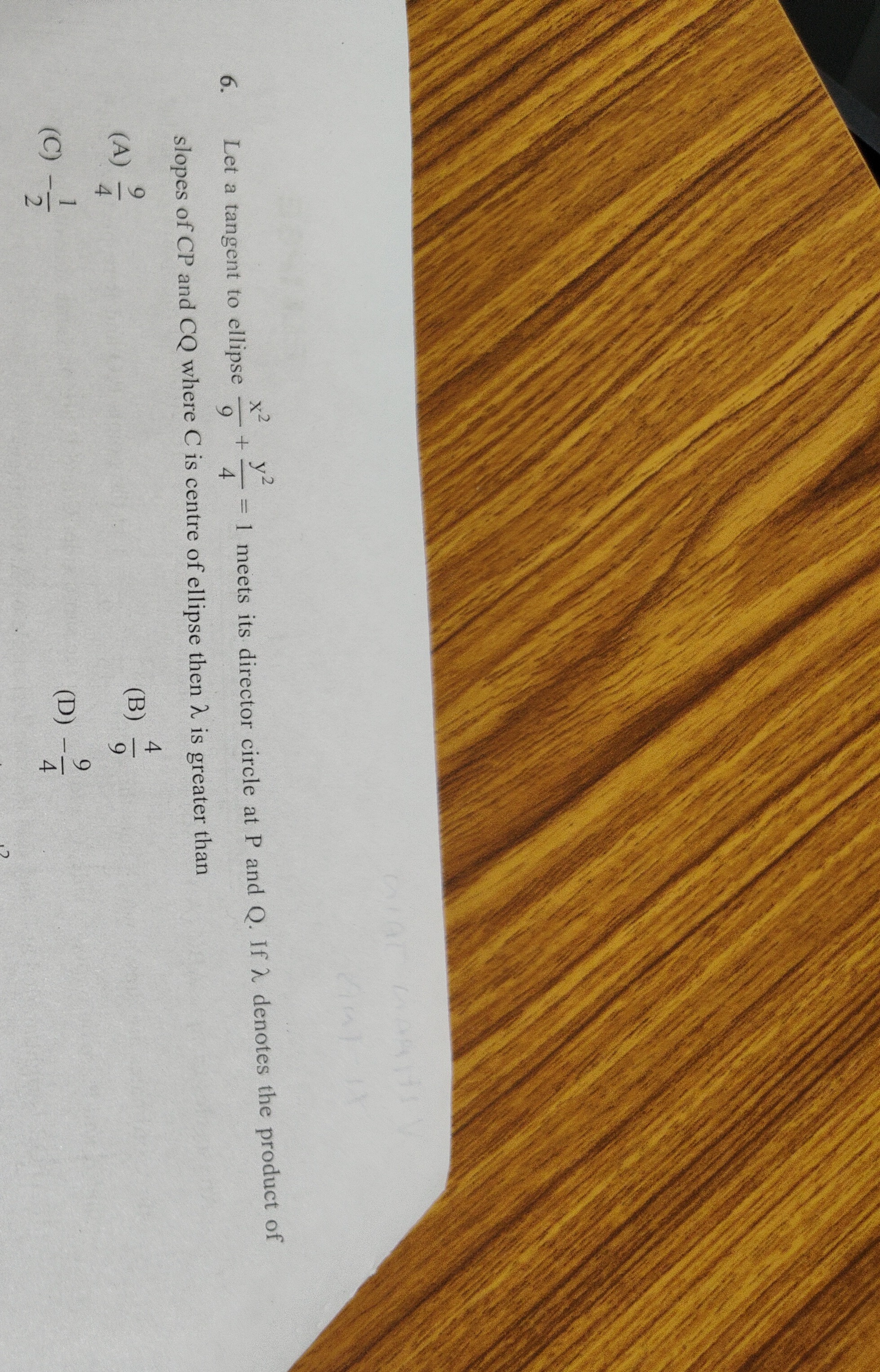Question
Question: Let a tangent to ellipse $\frac{x^2}{9} + \frac{y^2}{4} = 1$ meets its director circle at P and Q. I...
Let a tangent to ellipse 9x2+4y2=1 meets its director circle at P and Q. If λ denotes the product of slopes of CP and CQ where C is centre of ellipse then λ is greater than

49
94
−21
−49
C and D
Solution
The equation of the ellipse is 9x2+4y2=1, so a2=9 and b2=4. The center of the ellipse is C=(0,0). The director circle of the ellipse is x2+y2=a2+b2=9+4=13. Let the tangent to the ellipse be y=mx±a2m2+b2. The points P and Q are the intersections of the tangent and the director circle. The equation of the lines CP and CQ passing through the origin and points P and Q can be obtained by homogenizing the equation of the director circle with the tangent equation. The equation of the tangent is axcosθ+bysinθ=1. Substituting 1=3xcosθ+2ysinθ into x2+y2=13: x2+y2=13(3xcosθ+2ysinθ)2 x2+y2=13(9x2cos2θ+4y2sin2θ+3xycosθsinθ) Rearranging this into a homogeneous quadratic equation Ax2+2Hxy+By2=0: x2(1−913cos2θ)+y2(1−413sin2θ)−313xycosθsinθ=0 The product of the slopes of CP and CQ (which are the lines represented by this homogeneous equation) is λ=BA. λ=1−413sin2θ1−913cos2θ=1−413sin2θ1−913(1−sin2θ)=1−413sin2θ−94+913sin2θ λ=44−13sin2θ913sin2θ−4=94⋅4−13sin2θ13sin2θ−4=94⋅4−13sin2θ−(4−13sin2θ)=−94. We are given that λ is greater than one of the options. We have λ=−94≈−0.444. Checking the options: (A) −94>49 is false. (B) −94>94 is false. (C) −94>−21 is true, since −0.444>−0.5. (D) −94>−49 is true, since −0.444>−2.25. Both options (C) and (D) satisfy the condition λ>option.
